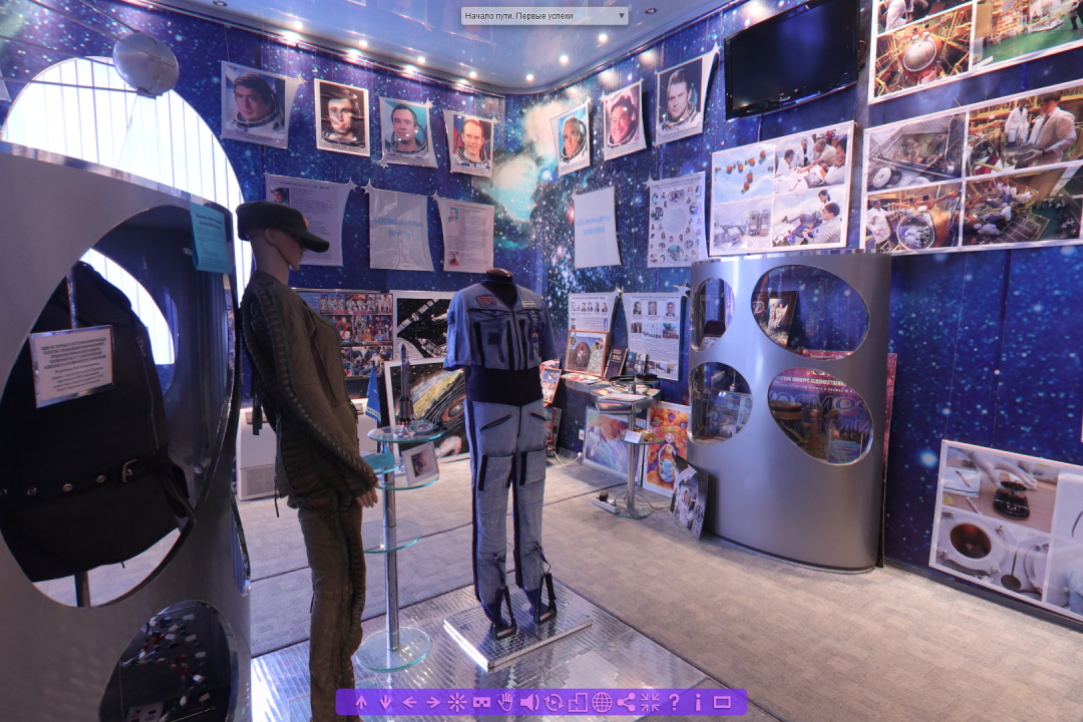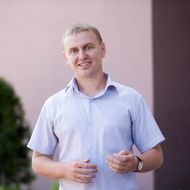HSE University-Perm Master's Student Creates Virtual Tour of Museum of Space Biology and Medicine
Viktor Durov, a second-year student of the Master's programme in Digital Humanities and an employee of the Department of Pedagogics and Humanities at Voronezh State Medical University named after N. N. Burdenko, has developed an interactive virtual tour around the Museum of Space Biology and Medicine named after V. V. Antipin in Voronezh.

Viktor Durov, a second-year student of the Master's programme in Digital Humanities and an employee of the Department of Pedagogics and Humanities at Voronezh State Medical University named after N. N. Burdenko, has developed an interactive virtual tour around the Museum of Space Biology and Medicine named after V. V. Antipin in Voronezh.
The museum is devoted to the contribution made by scientists from Voronezh Medical University to space biology and medicine. Notable exhibits include a memorial to Vsevolod Antipov, one of the founders of space radiobiology, as well as a number of authentic items related to the study of space.
The virtual tour will immerse visitors in the history of space biology. With the help of 360-degree images, you can see the museum exhibits from all sides, study their history, and even watch video interviews with astronauts. The virtual tour is accompanied by an audio guide that includes a story about the early success of space biology, the university’s scientific developments, physician astronauts, and modern space technology. The tour lets visitors explore 3D models of space exhibits and watch videos about space exploration.
Go on the virtual tour (in Russian)
Viktor Durov, second-year student of the Master's programme in Digital Humanities

Before entering the programme, I had no experience in creating virtual tours and digital projects. The project idea came to me during the spring semester thanks to the project seminar and subject ‘Virtual Heritage: VR/AR Technologies for Culture and Art’. Natalya Gomenyuk and Iliana Ismakaeva supported the idea. The idea was based on the fact that astronautics is always interesting to a wide audience, and the university where I teach has a museum that explores the development of astronautics in terms of the contributions of biology and medicine. I have an interest in astronautics and astronomy, which increased my desire to implement this project. What’s more, in terms of technology, it was doable—as an amateur photographer, I have the equipment needed to create 360-degree panoramic images.
The project convinced me that the idea could be realised if adjustments were made flexibly, taking into account objective circumstances, while maintaining the project's conceptual basis. We arrived at the idea of creating a digital cluster that expands the museum’s content and includes the Sketchfab and izi.Travel platforms. I am currently continuing my work on the project—an audio guide will appear soon. This creative process is exciting. I hope that the project will be of interest to people and will find a permanent audience.
Гоменюк Наталья Викторовна
See also:
Student Conference on Computational Linguistics Held at HSE University in Nizhny Novgorod
ConCort 2023, a forum dedicated to research in corpus technology and computer science in the humanities, brought together experts and students from all over Russia. The participants discussed the latest developments in corpus linguistics, including the rapidly developing field of digital humanities.
‘Our Strength Is in Our Interdisciplinarity, Both Methodologically and Practically’
What are the necessary digital competencies for students of humanities? Where can they apply their knowledge and skills? What projects in digital humanities are currently underway at HSE University Perm? Dinara Gagarina, HSE University-Perm scholar and the national representative of Digital Humanities Course Registry, answers these and other questions in her interview with the HSE Look.
Digital Publications: Present and Future
Anastasiya Bonch-Osmolovskaya, Associate Professor at the School of Linguistics and Head of the Master’s in Digital Humanities, took part in the first webinar of the UniverCities and Culture series held by the University Network of European Capitals of Culture and the Network of Universities from the Capitals of Europe (UNICA) on November 17. She spoke about The Digital Tolstoy Initiative, a joint effort by linguists, philologists, and programmers to develop a digital 'semantic' edition of Leo Tolstoy's complete works. In her interview, Dr Bonch-Osmolovskaya talks about the initiative and other digital humanities projects at HSE University
New Master’s Programme at HSE Will Give Humanities Scholars New Digital Tools
The new Master's Programme ‘Digital Humanities’ now welcomes applicants for its first cohort, which will begin in the 2019-2020 academic year. Programme Head Daniil Skorinkin discusses how digital methods empower researchers, what the programme will cover, and why both humanities scholars and techies are welcome the programme.
Digital Humanities: A God of Many Faces
These days, no scientific research is carried out without the use of digital media for the production or dissemination of knowledge. The term ‘Digital Humanities’ reflects this process and constitutes a scientific field where humanists not only aim to use a certain software, but also to understand research using quantitative semantics. However, digital infrastructures are not the same globally. In her talk at the HSE April International Academic Conference Dr Gimena del Rio Riande addressed various issues that arise in connection with digital humanities.
Examining the Digital Humanities from a Geopolitical and Technocritical Perspective
Gimena del Rio Riande, a researcher at the Consejo Nacional de Investigaciones Científicas y Técnicas (CONICET, Argentina), studies the development, use, and methodologies of scholarly digital tools, as well as how new scientific fields like digital humanities are ‘born’ in a country where technological issues are part of the social, cultural and economic context. At the upcoming XIX April International Academic Conference on Economic and Social Development, she will be giving a lecture entitled ‘Understanding Cultural Persistence and Change’.
Digital Humanities – What Is It and Why Is It One of the Newest Revolutions in the Humanities?
The scientific landscape is changing before our eyes. Different sciences are becoming more and more intertwined with one another, and this sometimes creates quite unexpected combinations, such as the digital humanities. This field is developing rapidly, with conferences and summer schools now being held on the subject. In addition, HSE recently devoted an entire week to the Digital Humanities. But what is this field and why is it so important?
'What Convinced Me to Come Here Was HSE's Focus on Research'
Frank Fisher, Associate Professor in the School of Linguistics, moved to HSE in 2016, having previously worked at Göttingen Centre for Digital Humanities. With his significant experience in the field, Frank instantly gave boost to digital humanities research at HSE. He became the co-founder of the Centre for Digital Humanities at HSE and is leading a new Junior Research Group on digital literary research. In January Frank became a co-director of DARIAH, a pan-European research infrastructure, with hopes to leverage his involvement there to the benefit of research projects at HSE.
‘These are the People Who Will Shape the Agenda in the Humanities’
The first Moscow-Tartu School in Digital Humanities has taken place at the Leo Tolstoy House and Museum in Yasnaya Polyana. The school‘s aim is to create an interdisciplinary academic environment in which modern computer methods are applied to the study of texts. The school was organized by the HSE School of Linguistics, Leo Tolstoy House and Museum in Yasnaya Polyana, and the Department of Russian Literature at the University of Tartu.


